The healing power of touch has been documented for treating and tending ailments for thousands of years, with the earliest use of massage by Egyptians and Chinese. In China, documents authored between 480 and 722 B.C. have been found to contain references to ancient medical knowledge dating back to 2700 B.C. that detail massage therapy’s healing abilities and benefits.
Beginning around 1000 B.C., Buddhist monks from Japan studying in China noted the healing power of massage as part of Chinese traditional medicine. The Japanese customized the methods of massage and this developed into Shiatsu. Focusing on the Chinese theory of imbalance in a person’s energies, Shiatsu used massage to stimulate pressure points to restore balance.
Ancient Greece’s use of massage dates back to 800 to 700 B.C., where massage was used to condition the bodies of competitive athletes. Around 200 years later, Hippocrates advocated the benefits of massage therapy, along with rest, proper diet, fresh air, and music, to maintain one’s body in a healthy state.
The use of massage therapy as one element of Hippocrates’ total body conditioning was employed by the Romans in the first century B.C. Wealthy Romans were given massages in their homes while the general populace would go to public baths, where they would receive massages to improve circulation and limber up their joints. This practice, along with the public baths themselves, was condemned at one point due to the decadent atmosphere it encouraged.
Until the 17th century, massage therapy took a back seat to other methods of treating ailments and injuries. From 1600 to 1800, the benefits of massage therapy were documented but did not gain popularity in Western culture until the late 19th century and early 20th century.
During World War I, massage techniques were used to treat injured soldiers who had sustained nerve injuries or what we now call PTSD (post-traumatic stress syndrome). Despite the benefits of massage, it didn’t enter mainstream consciousness until the end of the 1900s, when an preferential increase for natural healing methods took root.
With a renewed interest in the therapeutic benefits of massage came the government’s perceived need for licensing and regulation, and massage therapy is now recognized as a legitimate practice for improving an individual’s physical conditioning and emotional well-being. Despite the centuries of evolution with regard to the practice of massage therapy, many practitioners still hold fast to the techniques and methods of massage’s ancient beginnings.
Primary Source: http://www.naturalhealers.com/natural-health-careers/massage/massage-therapy-history
Secondary Source: https://en.wikipedia.org/wiki/Massage (Used only for the data regarding 2700 BC Chinese use of massage.)







Comments are closed.